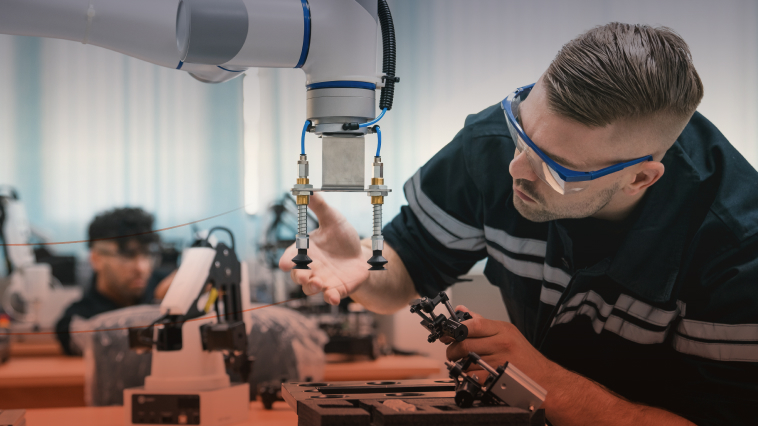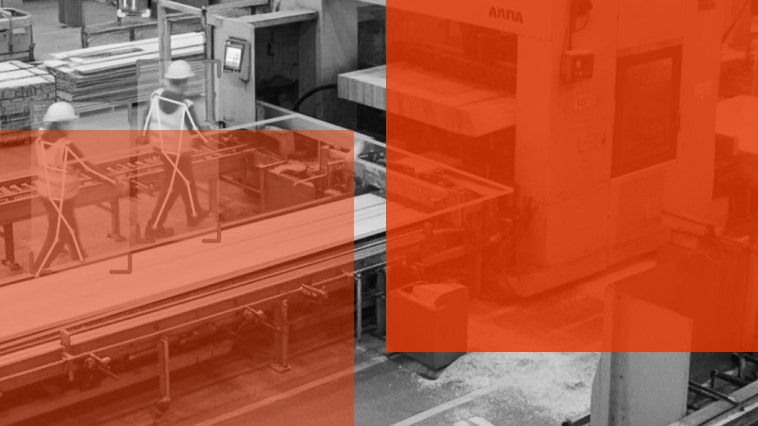Digital transformation is changing the face of manufacturing in almost every product category. Factories are increasingly digitizing their infrastructure and processes to upskill their operators and improve business performance. A key part of the manufacturing equation is the workforce that keeps facilities alive. So, what is digital transformation doing about employee health and safety? Although EHS is still largely governed by manual processes, a best-performing EHS manager is driving the culture change in their facilities today through the use of novel technologies.
In recent years we have worked with and met a wide variety of EHS teams in the industry. There is a particular segment of teams, pioneer EHS teams, that are steps ahead of their peers in terms of delivering best-in-class operational EHS success. What sets pioneer EHS teams apart is their willingness to source new technologies to overcome their daily challenges. This includes the use of video cameras to automate inspections, digital reporting services, and control room dashboards to orchestrate their time and workforce all with the goal of minimizing EHS risk across the board.
On a daily basis, pioneer EHS teams work closely with new technology integrators to bridge the gap between their IT teams, company management, and technology suppliers. They integrate new tools such as Intenseye on many different levels and adopt them quickly and broadly. Their agility is helping them to set up new workflows to reduce the time spent on a manual process and save money spent on absence time and insurance premiums significantly. Like other divisions in production, now these EHS teams are driving a more efficient workplace with new advancing technologies.
A typical day of a pioneer EHS team manager
To bring this topic to life, we wanted to give you a glimpse into the day of a pioneer EHS team member who we’ll call Mark. Mark is an EHS manager in a manufacturing company. After implementing Intenseye into his operations, here is how his day looks like:
08:00 AM
Before the toolbox talk, Mark logs into the Intenseye Dashboard to see the safety alerts from the previous day. Intenseye suggests that he focuses on Workplace Traffic Management because there was a very high number of critical Pedestrian Walkway violations that the Intenseye system automatically detected yesterday
08:30 AM
Mark hits the printout button on the Intenseye platform for some of the critical alerts and goes to the Toolbox Talk location. He starts a discussion with his team to review the Workplace Traffic Management alerts from previous days and shows the printed alerts to employees. Employees feel highly engaged as they can see what happened in their facilities, and they start thinking about solutions. From the discussions during the Toolbox Talk, Mark understands that the pedestrian walkway at the warehouse is not well located and goes to the area to have a closer look.
09:00 AM
After he visits the warehouse, Mark confirms that the layout of the pedestrian walkway indeed wasn’t good enough. He logs into the Intenseye platform, selects one of the alerts, and assigns a task to review the pedestrian walkway layout to Henry, Engineering Manager.
09:30 AM
Mark then starts to prepare for the weekly EHS meeting at 10:00 AM. He logs into the Intenseye platform to prepare his weekly slides. He goes to the Control Room tab and chooses which graphs and analyses he wants to share with the team. After that, he hits the export button, and his presentation is ready for his meeting. He feels like he deserved a good coffee now!
10:00 AM
Attendees listen to Mark very carefully and with lots of interest. They seem to be impressed with the information that Mark is presenting. At the end of the meeting, Mark shows the performance comparison of the locations in their facilities and the critical alerts about Workplace Traffic Management and Lifting Operations. Together they agree to hold a follow-up meeting tomorrow to identify the root causes of these critical alerts.
11:00 AM
Mark receives a notification from the engineering manager for the task he assigned to him earlier. The engineering manager sends a proposal for the new layout, which could address the issues identified by employees in the morning Toolbox Talk. Mark accepts the solution, and he gets immediate updates on Intenseye’s task management tool.
11:30 AM
The facility manager informs Mark about a safety critical Working At Height activity that will start at 12:00 am. Mark logs into the Intenseye platform and finds the camera for that location and sets his Working at Height rules so that Intenseye will monitor this event.
12:30 PM
Mark checks the alerts and he sees a critical Potential Dropped Object alert. He immediately calls the area supervisor to remove the hammer that was left outside the platform. Mark receives an Observation notification that says the hammer is removed and after 2 minutes the area supervisor calls Mark to say thanks for the heads up and to inform him that the hammer has been removed.
1:30 PM
Mark receives a notification on his mobile phone while he was having his lunch. Mark connects to the Intenseye live feed to find that the man is down. He immediately calls the emergency services.
1:35 PM
A medical ambulance arrives at the facility and directly goes to the exact location that is sent by the Intenseye platform. They take the injured person to the hospital as he is showing severe heat stress cause symptoms.
2:00 PM
Mark receives a call from the injured person who thanks him for the rapid medical emergency response, which prevented him from getting a heat stroke.
2:30 PM
Mark gets an observation report on the Intenseye platform, which says that the Working at Height activity is completed and he receives a quick analysis of the alerts for that particular activity. He reviews and amends the Working at Height Risk Assessment as he didn’t include the dropped objects on his risk assessment earlier.
3:00 PM
Mark receives a call from his EHS director to congratulate Mark for leading his facility to the highest Compliance Score amongst all other facilities of the company. Mark’s director also informs him about the Intenseye Award Ceremony that will take place next month as his facility is nominated among 100+ Companies for the Intenseye Excellence Awards. Mark’s facility reduced the alert frequency rates by 20% from last year, and its Safety Compliance Score moved up from 70 to 89. As a result, the business managed to reduce its insurance premiums by 10%.
3:30 PM
Mark visits the Intenseye Community Page to understand how the Spill use case can be set. He asks his question to the Community and one of the EHS managers of another company walks. Mark through the setup process.
4:00 PM
Mark gets the automatically generated daily EHS Report email from Intenseye. He shares some of the alerts with the area supervisors and assigns tasks for corrective actions.
4:30 PM
Mark finishes his work and feels great. He had a very productive day and managed a worksite through Intenseye’s integrated cameras while keeping tabs on what was happening across his entire facility.
To learn more about industry best practices, schedule a demo with us.



